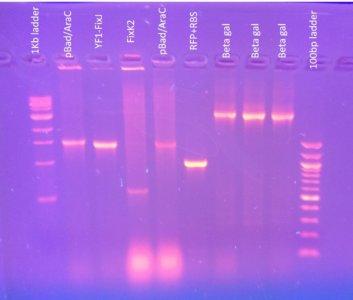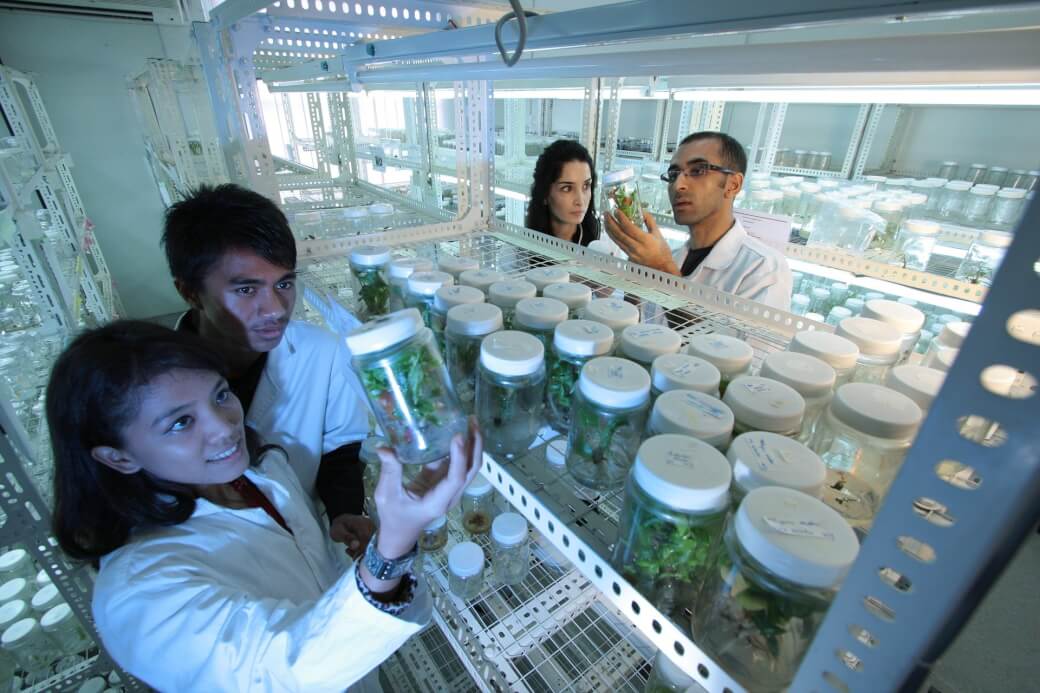Biotech Without Borders is a Brooklyn-based non-profit 501(c)(3) public charity dedicated to democratizing the practice of biotechnology for useful and peaceful purposes in order to benefit humankind and the planet.
According to the organization, “We believe that engaging the end users- all of us– in biotech through actual participation is the best way to ensure a greater future for us all. Shouldn’t something this valuable be practiced worldwide, by the most diverse array of practitioners? An important part of our mission is to enable the hands-on practice of biotechnology by communities, groups and countries hitherto underrepresented in the biotech landscape.“
Here are some classes at Biotech without Borders you can take to further your synthetic biology skills:
LAB SKILLS: CUTTING AND MEASURING DNA
About lab skills workshops: In this ongoing series of workshops at Biotech Without Borders, we’re inviting people of all skill levels together to complete a small teaching exercise in order to learn about laboratory work. We will cover the proper use of equipment and the real-world application of the techniques being practiced.
Prepare & Analyze a DNA molecular weight ladder
How does a scientist know the length of a fragment of DNA? A routine approach is by comparing the fragment to other fragments of known sizes using a technique called gel electrophoresis. In this workshop, you will prepare your own DNA “ruler” by cutting a circular piece of DNA with enzymes called restriction endonucleases that act as tiny molecular scissors. The discovery of these enzymes in the 1970s was key to establishing the field of genetic engineering. Visualizing the resulting fragments of DNA on a gel is a technique used every day in labs all around the world. Participants will get hands-on experience using restriction enzymes, micropipettes, gel electrophoresis equipment, a heat block and a UV transilluminator.
BUILD A BIOSENSOR WITH SYNTHETIC BIOLOGY
Biosensors are living organisms programmed to detect an input and generate a measurable output. In this hands-on lab class you will use synthetic biology techniques to design and build a simple DNA biosensor device and load it into a cell to test. Students will have a choice of several combinations of inputs and outputs. We will also explore the principles of synthetic biology (DNA ‘biobricks’, databases and SBOL symbols) and its enormous potential to disrupt multiple industries. Is hacking DNA as easy as using Lego bricks? Join us for this one-of-a-kind class and find out!
No previous experience necessary but participation in our lab skills series of workshops is recommended. Minimum age is 13, and anyone under 18 must be accompanied by a pare.

Boardmember Ellen Jorgensen, PhD.
Dr. Jorgensen is the Chief Science Officer at Carverr, Inc., a biotech startup that uses DNA-barcoded probiotics to track and trace products through supply chains. She is passionate about increasing science literacy in both student and adult populations, particularly in the areas of molecular and synthetic biology. In 2017, Fast Company magazine named her one of their Most Creative Leaders in Business. Dr. Jorgensen’s two TED talks (Biohacking: You Can Do It TooandWhat You Need To Know About CRISPR) have received over two million views.
There is a common misconception that synthetic biology is unnatural and more dangerous than genetic engineering. But the overwhelming majority of synthetic biology projects present little or no risk, especially when confined to biomanufacturing—that is, fermentation in large tanks to produce particular compounds and molecules. The most common industrial host organisms, such as special strains of yeast and bacteria that cannot survive outside a lab environment, have been used safely for 30 years. I think there is an education challenge. But the next generation is going to be a lot more informed. Students in schools in the United States already do transformations as part of the biology curriculum, inserting a foreign gene into a bacterium. So people will come to understand that synthetic biology is really no different from a lot of other things we take for granted, like electricity. You can electrocute someone with electricity or you can use it to light your house, but it doesn’t mean that electricity is wholly dreadful just because it’s powerful. That said, there are many different techniques in synthetic biology, and some of them do require careful thought about how they should be used. For example, there is a technology known as gene drive, which is extraordinarily powerful. It’s a way of inserting a genome-editing system into a genome, which is then perpetuated in subsequent generations. Within a relatively small number of generations, you could spread this genetic change through an entire species. It’s being looked at for killing mosquitoes. As a biologist, I worry about the unintended consequences of this kind of manipulation. But how far might we be willing to go to get a desired result? In South America, women are scared to get pregnant because of the Zika virus. Might public opinion at some point determine it’s OK to wipe out a species?
Ellen Jorgensen, interview with McKinsey

